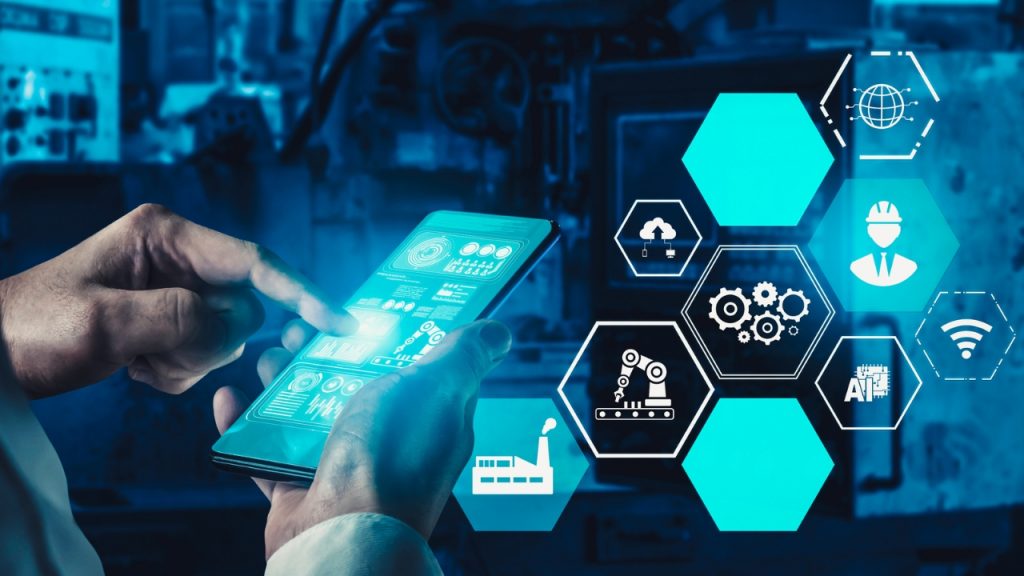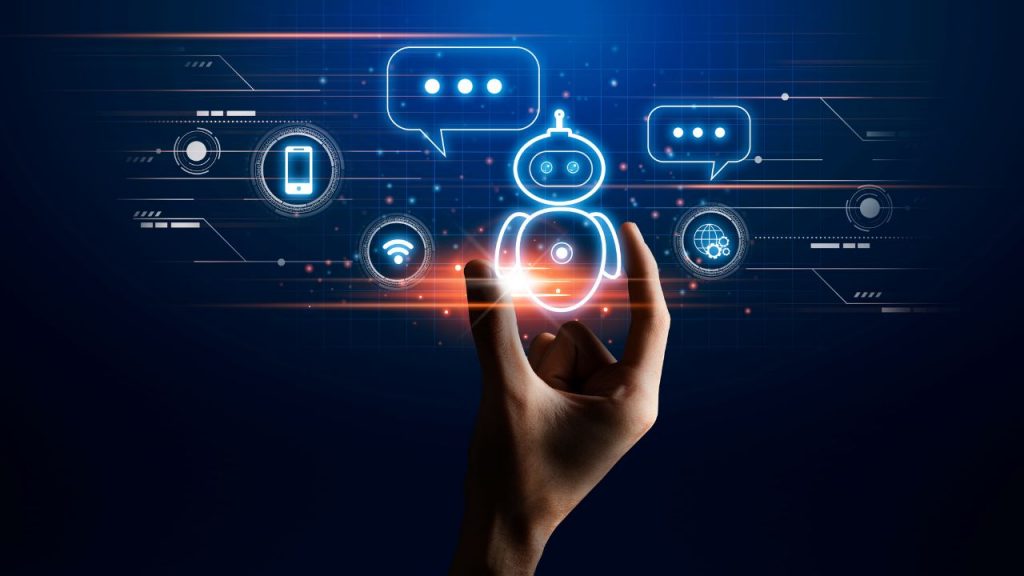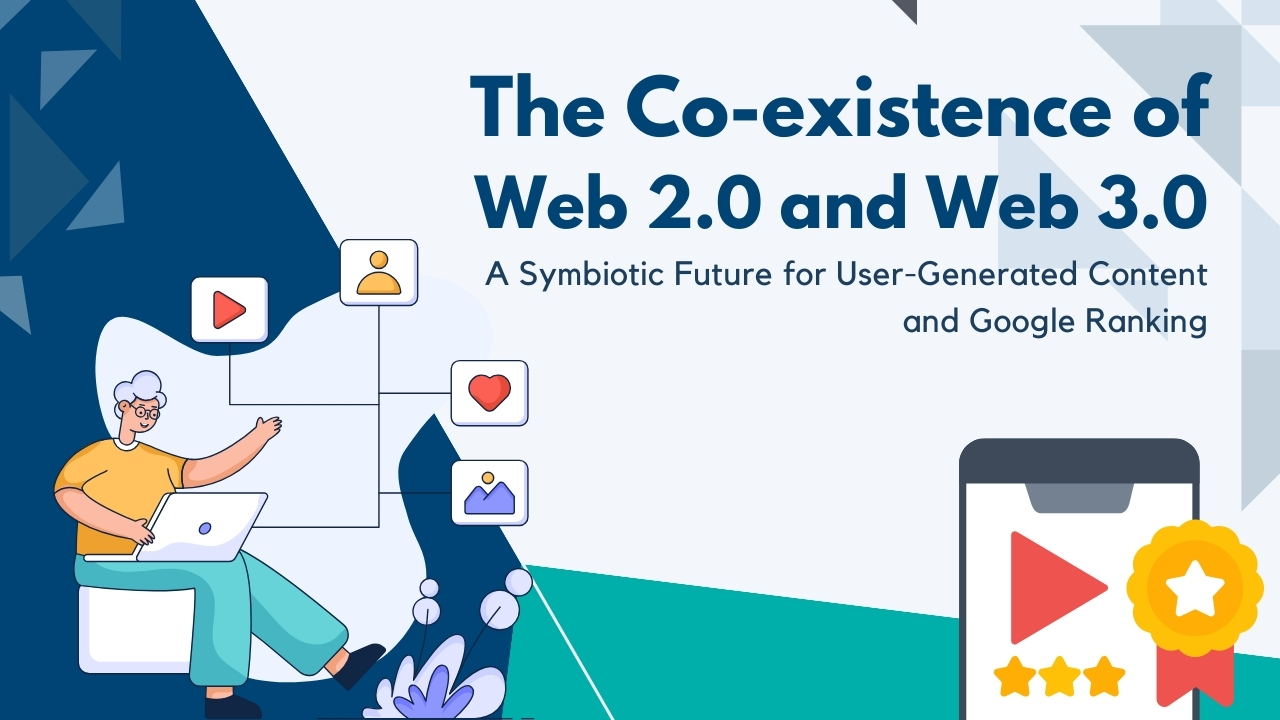Since its inception, the internet has expanded significantly, going through several stages and developments. However, two distinct eras have shaped the way we interact with online content: Web 2.0 and Web 3.0.
Each of these epochs brought its own set of innovations, transforming how we create, share, and consume information.
But what happens when these two worlds collide? Is there room for co-existence, or will one inevitably overshadow the other?
With the help of this blog, we are going to dive into the symbiotic relationship between Web 2.0 and Web 3.0 and how it paves the way for a promising future where user-generated content and Google ranking converge in harmony.

First, let’s unravel the essence of each era!
Features of Web 2.0 Era
Web 2.0, which commenced in the early 2000s, revolutionized the internet by fostering user interaction and collaboration. Various features like social media platforms, blogs, sharing, and commenting updates were introduced. These factors changed the way of user’s online interaction. As a result, the focus shifted from static web pages to dynamic, user-generated content, ushering in an era of democratized information sharing.
Web 2.0 is embodied by platforms such as WordPress, YouTube, and Google Docs, which enable community involvement and user interaction. These platforms encourage users to participate, but because they share personal information, they give rise to worries about data security and privacy.
Furthermore, the abundance of user-generated content might cause information overload, making it difficult to sort through and locate pertinent content. To improve user experiences in the digital sphere, Web 2.0 thus emphasizes the need for strong privacy safeguards and efficient content selection tools, even as it promotes cooperation and interactivity.
Understanding the Web 3.0 Era
On the other hand, Web 3.0 represents the next phase of internet evolution, characterized by decentralization, interoperability, and machine intelligence. It can be said that Web 3.0 aims to enable machines to comprehend and process information similarly to humans, thus making the internet smarter.
Blockchain technology, smart contracts, and decentralized applications (DApps) are leading the charge in Web 3.0, offering users unparalleled transparency, security, and autonomy. By leveraging blockchain’s immutable ledger, smart contracts execute agreements without intermediaries, ensuring trust and efficiency.
Decentralized apps usher in a new era of digital sovereignty by giving consumers ownership and control over their data. According to this Web 3.0 vision, people take control of their online personas, encouraging authenticity and trust in online interactions.
With data breaches and privacy concerns rampant in the digital age, the promise of Web 3.0 lies in its ability to redefine user empowerment and reshape the internet landscape.
Decoding The Symbiotic Relationship Between Two Web Eras:
At first glance, Web 2.0 and Web 3.0 may seem diametrically opposed, with one emphasizing centralization and the other decentralization. However, upon closer inspection, their co-existence reveals a symbiotic relationship that amplifies the strengths of both paradigms.
User-generated content, a hallmark of Web 2.0, thrives in the decentralized environment of Web 3.0. Blockchain-based platforms offer immutable records of ownership and attribution, ensuring that creators receive proper recognition and compensation for their contributions. Moreover, decentralized social networks prioritize privacy and data sovereignty, addressing growing concerns about surveillance capitalism and data exploitation.

Did you know that with a market valuation of USD 2.25 billion in 2023, the global Web 3.0 market is projected to expand at a (CAGR) of 49.3% between 2024 and 2030?
Conversely, Web 3.0 benefits from the rich pool of user-generated content generated by Web 2.0 platforms. Social media posts, blog articles, and multimedia content serve as valuable data inputs for machine learning algorithms, enhancing the capabilities of AI-driven services.
Web 3.0 platforms can deliver personalized experiences and targeted recommendations by analyzing user behavior and preferences, driving engagement and user satisfaction. The rising e-commerce businesses can obtain great support in terms of enhancing customer experience and engagement.
Google Ranking in the Hybrid Era
But what about Google ranking, the holy grail of online visibility and discoverability?
In the symbiotic future of Web 2.0 and Web 3.0, traditional SEO strategies must adapt to the evolving digital landscape.
While backlinks and keyword optimization remain crucial ranking factors, Google’s algorithm is becoming increasingly sophisticated in evaluating content quality and relevance.
In this context, user-generated content gains prominence, as it reflects the authentic voices and interests of online communities.
Platforms that facilitate user engagement and foster genuine interactions are more likely to earn favorable rankings, aligning with Google’s emphasis on user satisfaction and trustworthiness.

Furthermore, Web 3.0 innovations such as decentralized identity and reputation systems can enhance the credibility of user-generated content, mitigating concerns about fake reviews and manipulated rankings. By leveraging blockchain-based attestations and verifiable credentials, Google can establish a more reliable framework for assessing content integrity and authenticity.
Key Takeaways:
- Web 3.0 envisions a digital landscape where users have ownership and control over their data, promising greater transparency, security, and autonomy.
- Your business’s SEO strategies must adapt to the evolving digital landscape, with user-generated content gaining prominence as a crucial factor in Google ranking.
- While Web 2.0 platforms foster community engagement, they also raise concerns about data privacy and information overload. However, the integration of Web 3.0 technologies offers opportunities to address these concerns and enhance user experiences.

Conclusion – Understanding The Future Of The Digital Landscape
Accepting the symbiotic relationship between Web 2.0 and Web 3.0 as we negotiate their convergence creates new opportunities for businesses, internet consumers, and content creators. Through the utilization of user-generated material in a decentralized ecosystem, we may cultivate an online space that places a premium on openness, equity, and community-driven creativity.
Google ranking is a sign of ethical behavior and true user value in this brave new world, in addition to being a gauge of online visibility.
Accepting the interdependence of Web 2.0 and Web 3.0, we set out on a path to a more open, reliable, and sustainable Internet—one in which originality thrives and genuineness is valued above all.
For aspiring business owners, managing the intricacy of digital settings can be intimidating. Gaining an understanding of Web 3.0 is essential to improving consumer engagement tactics.
For specialized digital solutions, connect with the experts at Matrix Media Solutions. Our team guarantees that you understand successful tactics, honing them to meet your requirements.
Let us assist you in creating an engaging online presence that is in line with your objectives and vision!


 November 16, 2021
November 16, 2021

